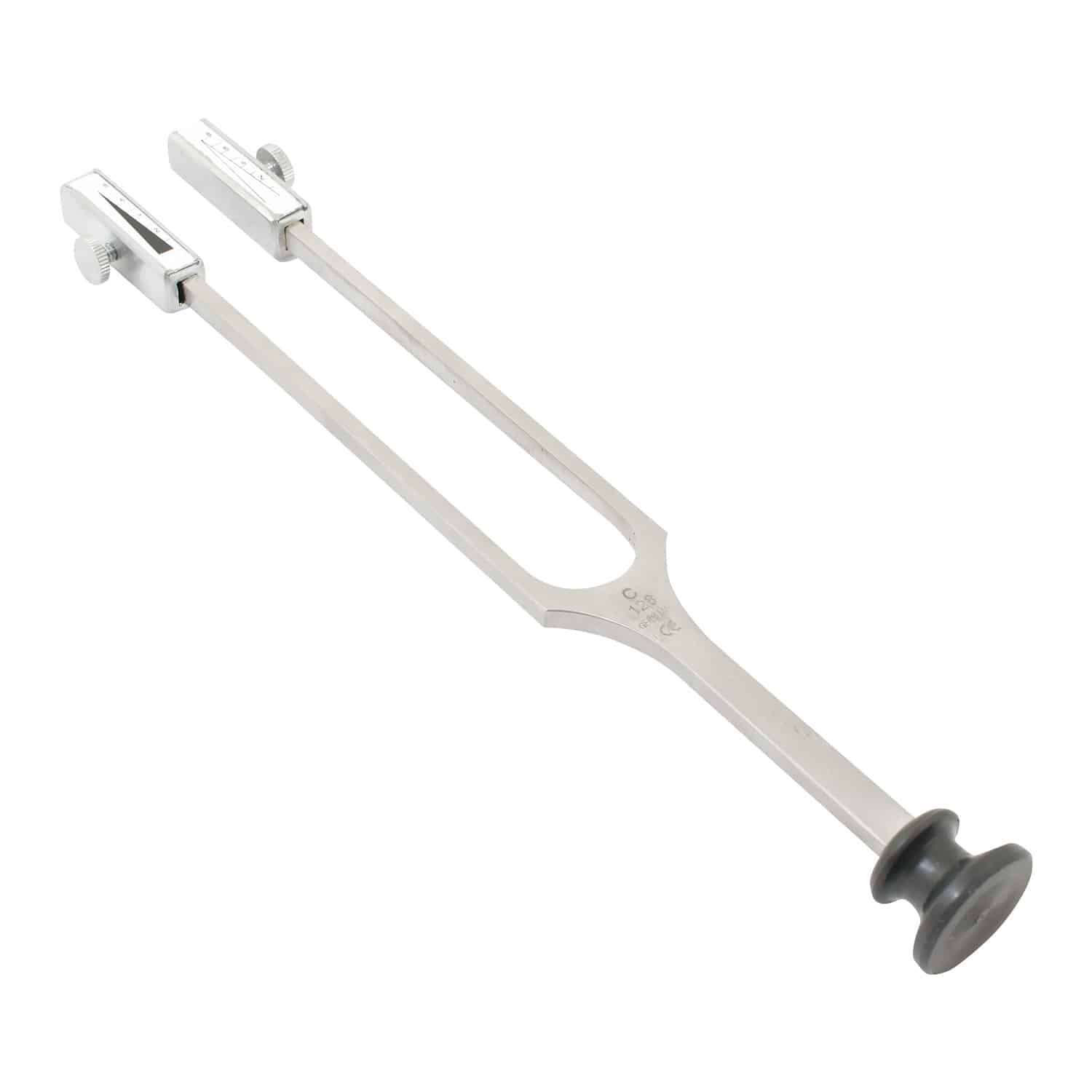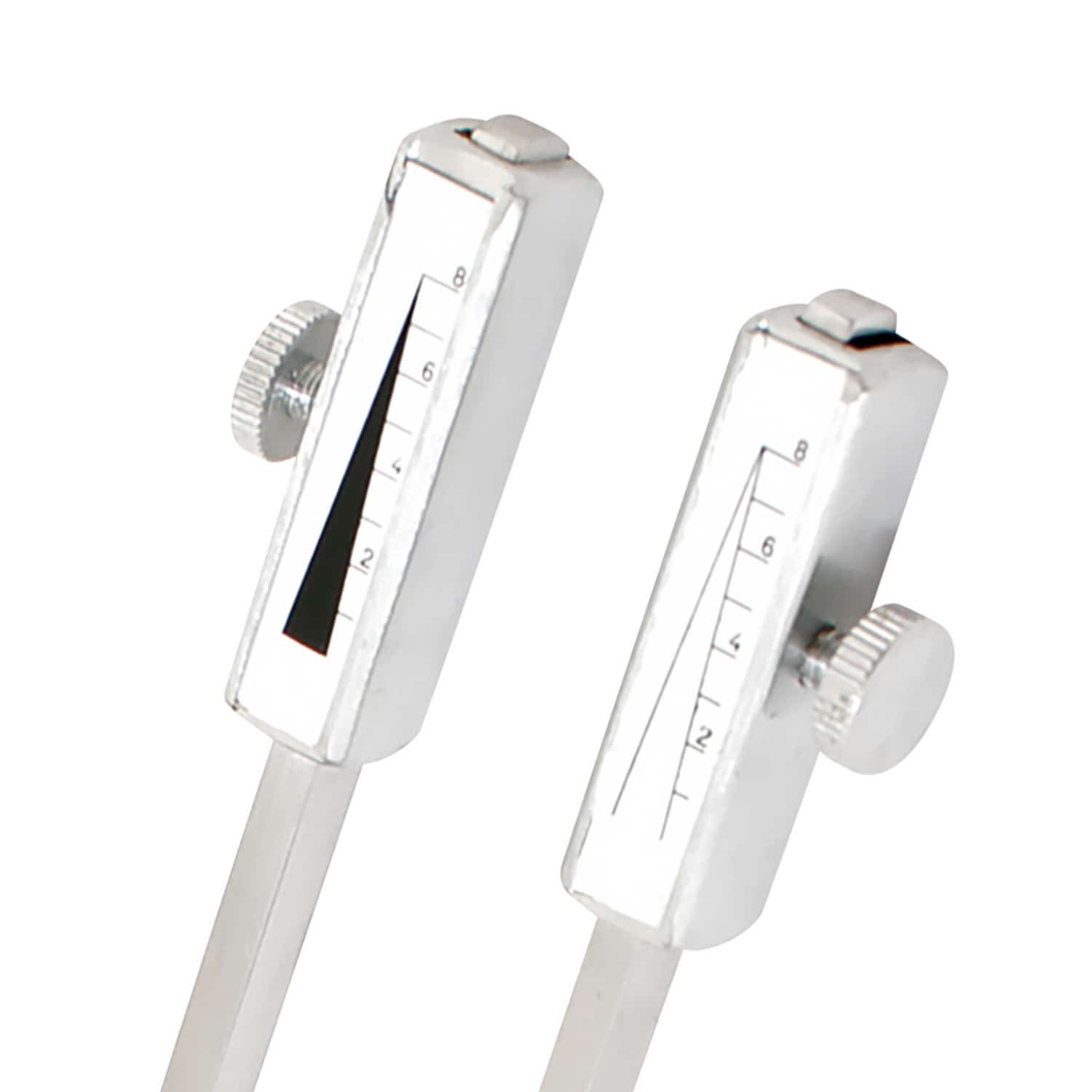
- Handy diagnostic instrument
- With dampers and base C 64 Hz/c 128 Hz
- Scale: 0 - 8
- Sturdy and high-quality manufacturing
- Can be customised with personalised engraving
- For use in neurology and ENT
- To diagnose vibrational sensitivity impairment
- To gain information on depth sensitivity
- To perform the Weber and Rinne test
Rydel-Seiffer Medical Tuning Fork
Personalised Laser Engraving Service
With the new engraving function, you have the option of customising your tuning fork with your name or a short text. To do this, simply use our online configurator. First select the font and then enter the desired engraving text (up to 26 characters). Please note that customised products are excluded from the right of return and that engraving emojis is currently not possible. For more engravable products and additional information on laser engraving, please visit our engraving service page.
The Rydel-Seiffer tuning fork can be used to diagnose polyneuropathy damage, as well as to detect hearing damage. The calibrated tuning fork vibrates at a frequency of 64 Hz (with dampers) or 128 Hz (without dampers). The dampers and the base of the tuning fork can be removed.
When used in neurology, the tuning fork is used to examine the patient's vibration sensation (pallaesthesia). This allows a diagnosis to be made about the patient's depth sensitivity, which is reduced in polyneuropathies. Younger people should be able to perceive minimal vibrations (scale value 8 out of 8). People with increasing age often show a slightly reduced vibration sensation (scale value 6 of 8). If the values are below six, this indicates the presence of a polyneuropathy.
In ENT medicine, the Rydel-Seiffer medical tuning fork is used in addition to a hearing test. The tuning fork can be used to easily detect hearing damage on one side (Weber test) and to differentiate between middle ear and inner ear hearing loss (Rinne test).
Product Details
- Rydel-Seiffer medical tuning fork
- Frequency: C 64 Hz/C 128 Hz
- Material: nickel-plated steel
- Removable base and dampers
- Length: 25.5 cm
- Width: 3.6 cm
- For determining hearing impairment and polyneuropathy damage
Product Identification
Manufacturer: Arno Barthelmes
Art. No.: 481121
The tuning fork is set into oscillation and its base is set onto the metatarsophalangeal joint. The patient indicates when he stops feeling the vibrations. The doctor can read the measurements of that moment from the scale. During the examination, the patient should have his eyes closed to fully concentrate on the vibrations.
The scale of the medical tuning fork ranges from 0 to 8. 0 corresponds to the maximum vibration strength, while 8 corresponds to minimal vibrations.
The tuning fork is put into oscillation by striking it on the ball of the thumb, or by plucking the tines of the tuning fork with the thumb and index finger. The vibrations create an optical phenomenon where two triangles become visible on the dampers, that overlap more and more when the vibrations decrease. The point of intersection indicates the intensity of the vibrations and can be read on the scale.
The Weber Test is performed to prove a one-sided hearing loss. During the test, the vibrating tuning fork is set onto the head of the patient who describes his auditory sensation. Normally, the patient would hear the sounds at the same volume in both ears. If the patient hears the sounds with different volumes, he has a middle or inner ear hearing impairment.
The Rinne Test helps differentiate between a middle and inner ear hearing impairment. The vibrating tuning fork is set on the bone behind the patient's ear until he stops hearing the sound. Then, the tuning fork is put in front of the patient's ear. If he hears the sound again, he has an inner ear hearing impairment. If the sound is imperceptible, or almost imperceptible, this hints to a middle ear hearing impairment.
Share your experiences with this product with other customers. Please click on the stars to submit your rating.











.jpg)




.jpg)
